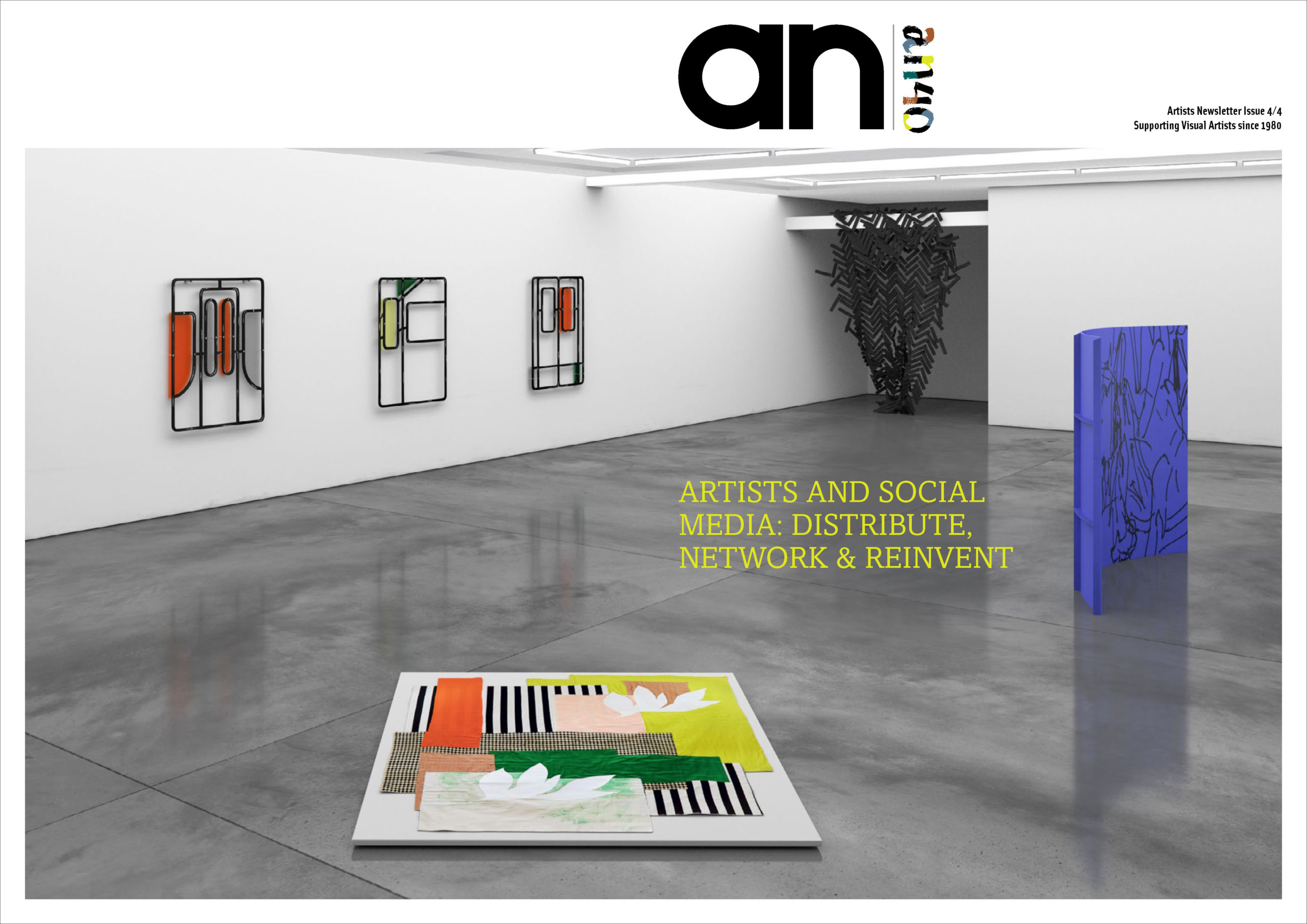Rates of pay for artists
A guide for artists and people who are paying artists to negotiate a fair rate of pay
for short-term work
A guide for artists and people who are paying artists to negotiate a fair rate of pay
for short-term work
For our final anniversary publication, Holly Willats explores how social media became a game changer for artists’ practices.
With a nod to the Noughties, Guest Editor Shy Bairns explores collectives and how artists work together to build their own art worlds.
The 2021 Guide includes a snapshot of this year’s graduating artists, plus Next Steps interviews with Joy Labinjo, Matthew Burrows and Jody Mulvey.
Catherine Bertola and Rosie Morris provide a platform for women artists and writers to highlight less visible, marginalised and precarious practices in the second series of our magazine style publications celebrating the a-n archive.
In the first of our new series of magazine style publications celebrating the a-n archive, Birmingham-based Black Hole Club unearth the past, probe the present, and look to the future.
Includes an expanded ‘Class of 2020’ section featuring images and insight from both graduating students and lecturers, plus there’s an extensive interview with collaborative duo Jane and Louise Wilson, and collectives from around the UK discuss why ‘putting heads together to collaborate is an artistic no brainer’. Available on issuu and as downloadable pdf.
Within UK universities, visual artists are working across university departments in many different ways ranging from arts and health initiatives, residencies and cultural heritage projects to commissions, teaching and PhD research. Artist Steve Pool identifies some key ways artists are working within HE and considers the value of such relationships to both artists and institutions.
When selling work through a gallery, how does an artist deal with VAT on sales commission? This guide by financial services experts Counterculture and VAT advisory service SOC VAT explains the two principle methods.
A practical guide for artists on different payment options, sending invoices, chasing payments and dealing with debtors.
A budget is an essential tool for any artist planning a new project, making a funding application or drawing up a business plan, while a-n’s Exhibition Payment Guide asks artists to provide a clear exhibition proposal and budget in advance of negotiation. This guide by the Cultural Enterprise Office in Glasgow offers straightforward advice on how to construct and manage a simple budget.
a-n’s Exhibition Payment Guide says artists should make sure they provide clear evidence of their work and experience when approaching a gallery with a proposal. This quick guide offers advice on the main areas to consider when developing a proposal, and includes tips on what to include when responding to an approach from a gallery or making a speculative pitch.
Artists and advisers identify key questions to ask to help sift the good opportunities from the mediocre, and the downright mendacious.
Consultant and curator Mark Doyle offers advice on how to generate sales and develop a market for your work, through building relationships with clients and collectors.
In the second part to ‘Selling your work: building relationships with clients and collectors’, consultant and curator Mark Doyle provides further recommendations for sales, aftercare, and maintaining relationships with clients and collectors.
Artists, collectors, gallery directors, curators and dealers offer tips and guidance on selling your work and maintaining relationships with clients and collectors.
In recent years many artists have moved from major conurbations to smaller towns or cities in the UK, with access to cheaper work space and accommodation, improved health and wellbeing, and the need for stronger community networks among the factors influencing their decision to relocate. In this guide, Dan Thompson explores the many and varied reasons why artists move to a new place.
Nine artists share their stories and advice on how to make the most of moving your home and practice to a new location. In this follow up to Dan Thompson’s guide to relocating, artists working across a range of practice areas discuss how they found new networks, refuelled their practice and sought out support mechanisms following a move.
In the first part of her Negotiating with confidence guide, Rivca Rubin, a trainer-facilitator-mediator, coach and mentor, discusses how structure, attitude, and the ‘power of words’ can facilitate successful negotiations.
In the second part of her guide to negotiations, Rivca Rubin discusses how through active language choices, we can create more satisfied and invigorated negotiations with galleries, organisations and commissioners.
Contemporary Arts Programme Manager at the National Trust Grace Davies explores the benefits to non-arts organisations of commissioning artists outside of traditional gallery spaces, and offers some top tips for artists to consider when making an application.
Kevin Hunt compiles a list of both online and in print reading material about the artist-led sector, as a supplement to his essay People like us and the new Artist-Led Hot 100 (version ii).
Hannah Pierce, who has held curatorial and programming roles with organisations including The National Trust and Jerwood Visual Arts, offers advice and explores the key issues to consider when applying for a residency with non-arts organisations.
Kevin Hunt explores the nature of temporariness and expiration, morphing and longevity in artist-led initiatives. Written to coincide with the launch of the Artist-Led Hot 100 (version ii) and Assembly Liverpool, May 2017.
Juan Bolivar, an artist and curator, explores the history and practice of curating, and provides ten key questions for independent curators and artists to help guide you in developing your first exhibitions. Bolivar’s painting practice runs parallel to his curating practice; first initiating TRAILER (2001-05) – an artist collective utilising temporary locations to stage exhibitions – and since, going on to curate over 40 exhibitions as an independent curator.




















